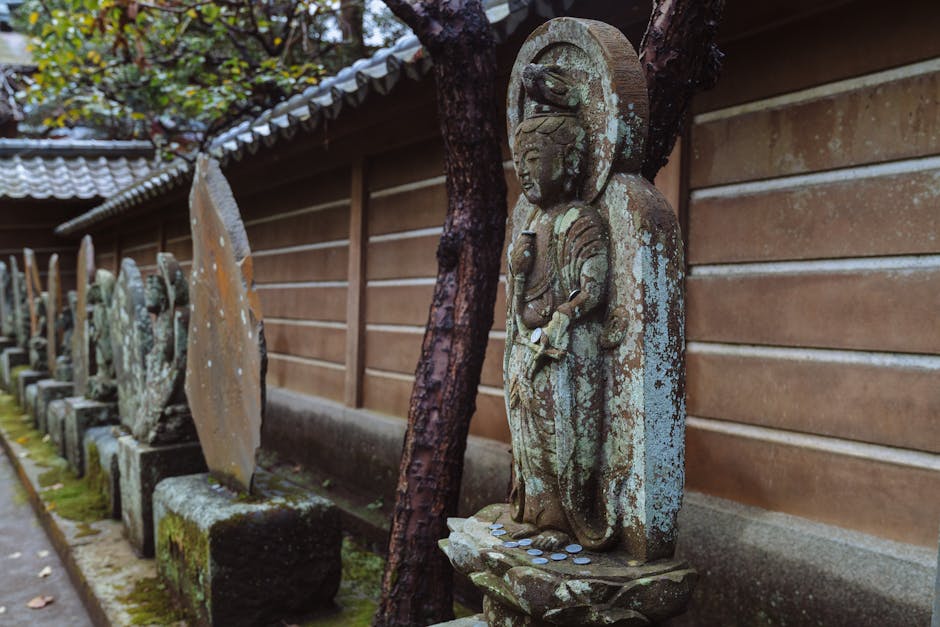⏱️ 7 min read
Throughout human history, civilizations have developed unique customs and rituals that reflected their beliefs, values, and understanding of the world. While some ancient traditions seem perfectly logical within their cultural context, others appear extraordinarily bizarre when viewed through a modern lens. These practices offer fascinating insights into how our ancestors lived, worshipped, and made sense of their existence. From peculiar burial rites to shocking coming-of-age ceremonies, ancient cultures around the world practiced rituals that would astound contemporary observers.
Ancient Traditions That Defy Modern Understanding
1. The Egyptian Practice of Mummifying Animals
While Egyptian mummification of pharaohs and nobles is well-known, the ancient Egyptians also mummified millions of animals. Cats, dogs, birds, crocodiles, and even beetles were carefully preserved and buried in dedicated animal necropolises. These weren't simply beloved pets—many were bred specifically for mummification as religious offerings to various deities. Archaeologists have discovered entire catacombs containing hundreds of thousands of mummified ibises, hawks, and other creatures. The scale of this practice was staggering, with some estimate suggesting that over 70 million animals were mummified during ancient Egypt's long history. This tradition reflected the Egyptians' belief that animals served as intermediaries between humans and gods.
2. Spartan Military Training and Child Abandonment
Ancient Sparta implemented one of history's most brutal child-rearing systems. Newborn infants were examined by elders, and those deemed weak or deformed were allegedly left to die on Mount Taygetus. At age seven, boys were taken from their families and enrolled in the agoge, a harsh military training program. They were deliberately underfed to encourage stealing, beaten regularly to build endurance, and forced to sleep outside in winter. Young Spartans also participated in the Crypteia, a secretive ritual where they hunted and killed helots (slaves) to prevent rebellion and prove their worthiness as warriors. This systematic brutality shaped Sparta into ancient Greece's most formidable military power.
3. The Mayan Bloodletting Ceremonies
The ancient Maya performed ritualistic bloodletting as a sacred act of communication with their gods. Nobles and royalty would pierce their tongues, ears, genitals, and other body parts using stingray spines, obsidian blades, or sharp bones. They collected the blood on bark paper, which was then burned, with the rising smoke believed to carry messages to the divine realm. These ceremonies often occurred during important astronomical events or before major undertakings like warfare or construction projects. The Maya believed that since the gods had sacrificed their own blood to create humanity, humans owed a debt that could only be repaid through blood offerings. Royal women particularly engaged in tongue-piercing rituals, threading ropes through the wounds in elaborate public ceremonies.
4. Roman Gladiator Blood as Medicine
Ancient Romans believed that gladiator blood possessed powerful medicinal properties. Spectators would rush into the arena after battles to collect the blood of fallen warriors, believing it could cure epilepsy and other ailments. Some even paid to drink warm blood directly from dying gladiators, thinking it would transfer the warrior's strength and courage. This practice was so common that Pliny the Elder documented it in his natural histories. The superstition extended beyond blood—gladiator sweat was collected and sold as an aphrodisiac, and liver from slain fighters was consumed as a health tonic. This macabre tradition reveals how Romans conflated entertainment, spirituality, and medicine in their daily lives.
5. Sky Burial in Ancient Tibet
Tibetan Buddhists developed a unique funeral practice called jhator, or sky burial, which continues in some remote regions today. Rather than burying or cremating the deceased, the body is taken to a designated location and methodically dismembered. The corpse is then left exposed for vultures and other birds to consume. This tradition stems from Buddhist beliefs about impermanence and the separation of body and soul. Once the spirit has departed, the body is considered an empty vessel, and offering it to sustain other living creatures is viewed as a final act of generosity. The practice also had practical origins—Tibet's rocky, frozen ground made traditional burial difficult, and wood for cremation was scarce at high altitudes.
6. The Aztec New Fire Ceremony
Every 52 years, the Aztecs performed the New Fire Ceremony, believing that the world might end if the ritual wasn't properly executed. As the date approached, people destroyed their possessions, extinguished all fires throughout the empire, and pregnant women were locked away wearing masks of maguey leaves. At midnight, priests would gather atop a mountain and watch the stars. If the Pleiades constellation passed the zenith, it signaled that the world would continue for another cycle. A sacrificial victim would then have their heart removed, and a new fire would be kindled in the chest cavity. This sacred flame was distributed throughout the empire, and massive celebrations would ensue. This ceremony demonstrates the Aztecs' sophisticated astronomical knowledge combined with their deep-seated apocalyptic fears.
7. Ancient Greek Ostracism Voting
Athenian democracy included a peculiar safeguard against tyranny called ostracism. Once a year, citizens could vote to exile any person they deemed a threat to democracy for ten years, without trial or formal charges. Voters would scratch names onto pottery shards called ostraka. If a person received at least 6,000 votes, they had ten days to leave Athens. Remarkably, the exiled person retained their property and citizenship, and could return after the decade-long banishment. This wasn't considered a punishment but rather a preventive measure. Notable figures like Themistocles and Aristides the Just were ostracized despite their contributions to Athens. The practice reveals the ancient Greeks' complex relationship with power and their willingness to sacrifice even valuable citizens to preserve democratic ideals.
8. The Inca Capacocha Child Sacrifices
The Inca Empire conducted Capacocha ceremonies where children, selected for their physical perfection, were sacrificed to the gods on remote mountain peaks. These children were considered blessed, not victims, and their families gained prestige. The selected children would journey from their villages to Cuzco, the capital, where they participated in elaborate ceremonies before being led to high-altitude sacrifice sites. Archaeological evidence shows these children were given maize beer and coca leaves before their deaths, likely to sedate them against the cold and thin air. Remarkably well-preserved mummies have been discovered, providing insights into Inca religion and culture. The practice intensified during crises like earthquakes, droughts, or the emperor's death, when the Inca believed the gods required appeasement.
9. Ancient Chinese Foot Binding
Beginning in the Song Dynasty and lasting roughly a millennium, Chinese families practiced foot binding on young girls, typically starting between ages four and seven. The process involved breaking the toes and arch, then binding them tightly to prevent growth, creating the desired "lotus feet" measuring just three to four inches long. This excruciatingly painful practice left women barely able to walk, which was precisely the point—limited mobility signified high social status, indicating the family was wealthy enough that women didn't need to perform manual labor. Foot binding became a prerequisite for marriage in many social classes, and unbound feet were considered unmarriageable and shameful. This tradition illustrates how beauty standards can become deeply embedded in cultural identity, persisting despite obvious harm.
10. Viking Funeral Ship Burials
Norse Vikings conducted elaborate ship burials for important individuals, placing the deceased in a vessel along with sacrificed slaves, animals, weapons, and treasures needed for the afterlife. Historical accounts describe how a chieftain's favorite slave woman might volunteer (or be forced) to join her master in death. According to the Arab chronicler Ibn Fadlan, who witnessed such a ceremony, the process involved days of ritual, including the slave woman being given intoxicating drinks before being sacrificed and placed alongside her master. The ship would then be set ablaze or buried under a massive mound. Archaeological excavations, including the famous Oseberg ship burial in Norway, have confirmed these practices and revealed the incredible wealth and craftsmanship invested in sending the dead to Valhalla.
Understanding Ancient Perspectives
These bizarre traditions remind us that cultural practices cannot be separated from their historical, religious, and social contexts. What appears shocking or incomprehensible to modern observers made perfect sense within the worldviews of these ancient peoples. Whether seeking divine favor, maintaining social order, ensuring successful afterlife journeys, or marking important life transitions, these rituals served vital functions in their respective societies. By studying these practices, we gain deeper appreciation for human cultural diversity and the ever-evolving nature of social norms. While we may never fully understand the motivations behind these ancient customs, they provide invaluable windows into the beliefs and values that shaped some of history's most influential civilizations.























